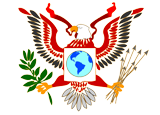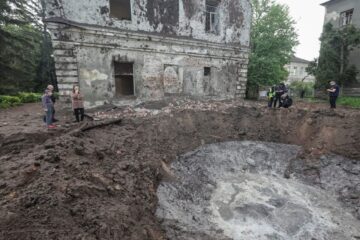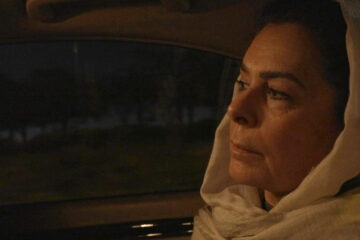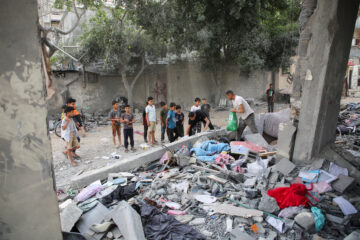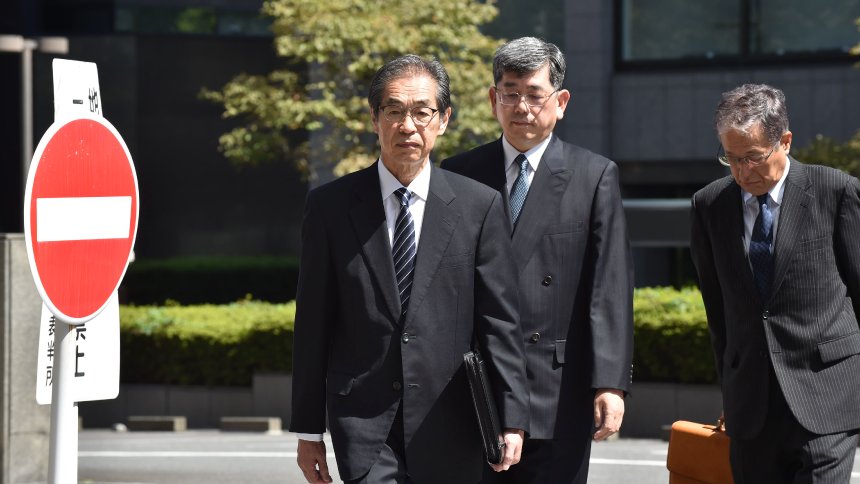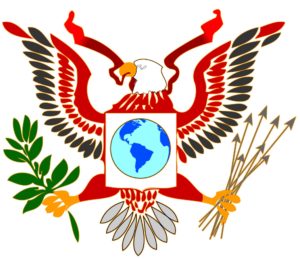Karabakh Armenians dissolve breakaway government in capitulation to Azerbaijan
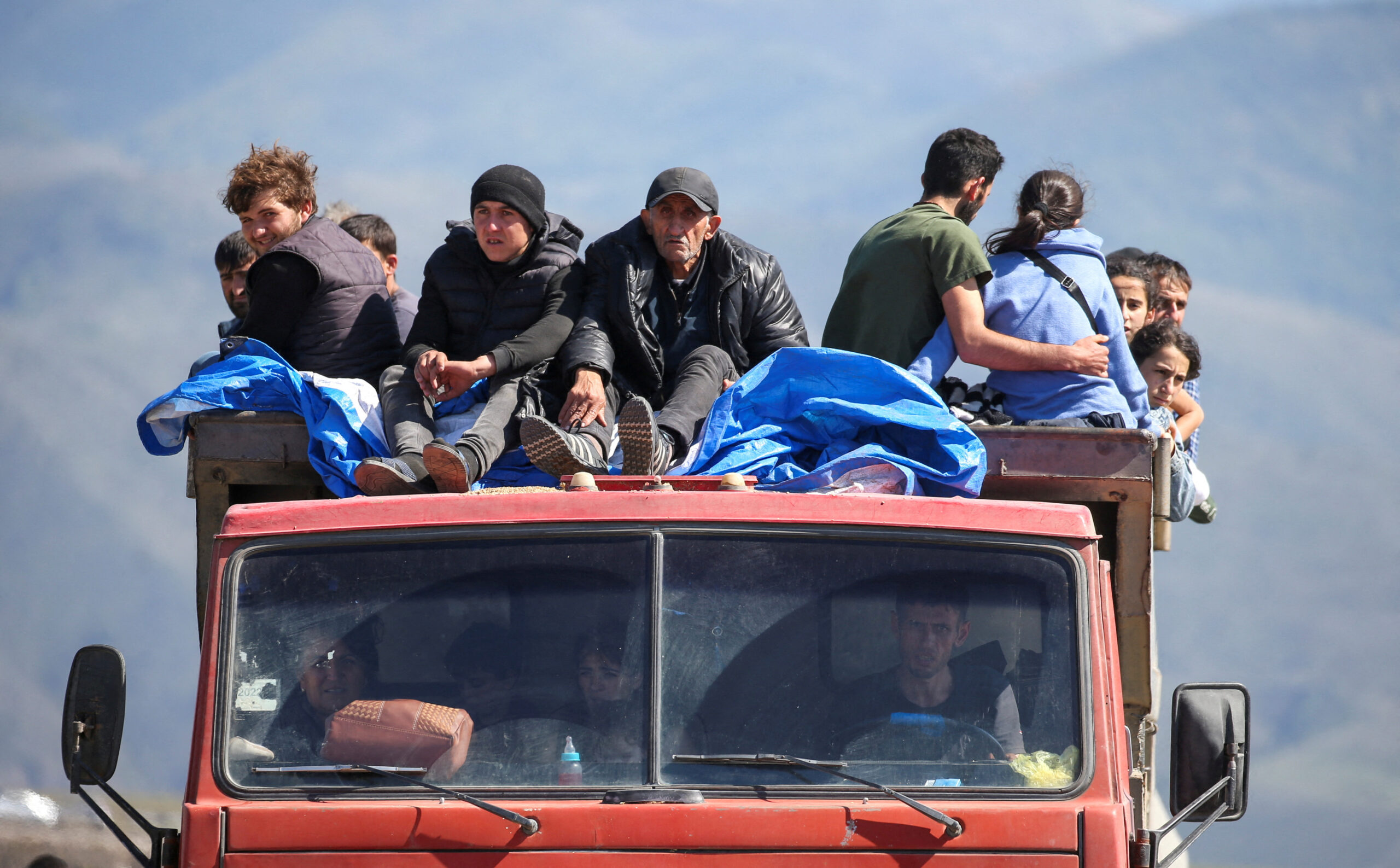 Refugees from Nagorno-Karabakh region ride in a truck upon their arrival at the border village of Kornidzor, Armenia, September 27, 2023. REUTERS/Irakli Gedenidze TPX IMAGES OF THE DAY
Refugees from Nagorno-Karabakh region ride in a truck upon their arrival at the border village of Kornidzor, Armenia, September 27, 2023. REUTERS/Irakli Gedenidze TPX IMAGES OF THE DAYBy Felix Light Reuters
Ethnic Armenians in Nagorno-Karabakh said on Thursday they were dissolving the breakaway statelet they had defended for three decades, where more than half the population has fled since Azerbaijan launched a lightning offensive last week.
In a statement, they said their self-declared Republic of Artsakh would “cease to exist” by Jan. 1, in what amounted to a formal capitulation to Azerbaijan.
For Azerbaijan and its president, Ilham Aliyev, the outcome is a triumphant restoration of sovereignty over an area that is internationally recognised as part of its territory but whose ethnic Armenian majority won de facto independence in a war in the 1990s.
For Armenians, it is a defeat and a national tragedy.
Armenia said that by Thursday morning, 65,036 people had crossed into its territory, out of an estimated population of 120,000.
“Analysis of the situation shows that in the coming days there will be no Armenians left in Nagorno-Karabakh,” Interfax news agency quoted Armenian Prime Minister Nikol Pashinyan as saying. “This is an act of ethnic cleansing.”
Azerbaijan denies that accusation, saying it is not forcing people to leave and that it will peacefully reintegrate the Karabakh region and guarantee the civic rights of the ethnic Armenians.
Karabakh Armenians say they do not trust that promise, mindful of a long history of bloodshed between the two sides including two wars since the break-up of the Soviet Union. For days they have fled en masse down the snaking mountain road through Azerbaijan that connects Karabakh to Armenia.
The United States and other Western governments have expressed alarm over the humanitarian crisis and demanded access for international observers to monitor Azerbaijan’s treatment of the local population.
Samantha Power, head of the U.S. Agency for International Development (USAID), said this week she had heard “very troubling reports of violence against civilians”.
Azerbaijan said Aliyev had told her at a meeting on Wednesday that the rights of ethnic Armenians would be protected by law, like those of other minorities.
“The Azerbaijani president noted that the civilian population had not been harmed during the anti-terrorist measures, and only illegal Armenian armed formations and military facilities had been targeted,” a statement said.
Aliyev’s office said on Thursday he was visiting Jabrayil, a city on the southern edge of Karabakh that was destroyed by Armenian forces in the 1990s, which Azerbaijan recaptured in 2020 and is now rebuilding.
FORMER MINISTER CHARGED WITH FINANCING TERRORISM
While saying he had no quarrel with ordinary Karabakh Armenians, Aliyev last week described their leaders as a “criminal junta” that would be brought to justice.
A former head of Karabakh’s government, Ruben Vardanyan, was arrested on Wednesday as he tried to cross into Armenia. Azerbaijan’s state security service said on Thursday he was being charged with financing terrorism and with illegally crossing the Azerbaijani border last year.
David Babayan, an adviser to the Karabakh leadership, said in a statement he was voluntarily giving himself up to the Azerbaijani authorities.
Mass displacements have been a feature of the Karabakh conflict since it broke out in the late 1980s as the Soviet Union headed towards collapse.
Between 1988 and 1994 about 500,000 Azerbaijanis from Karabakh and the areas around it were expelled from their homes, while the conflict prompted 350,000 Armenians to leave Azerbaijan and 186,000 Azerbaijanis to leave Armenia, according to “Black Garden: Armenia and Azerbaijan Through Peace and War”, a 2003 book by Caucasus scholar and analyst Thomas de Waal.
Many of the Armenians escaping this week in heavily laden cars, trucks, buses and even tractors said they were hungry and fearful.
“This is one of the darkest pages of Armenian history,” said Father David, a 33-year-old Armenian priest who came to the border to provide spiritual support for those arriving. “The whole of Armenian history is full of hardships.”
